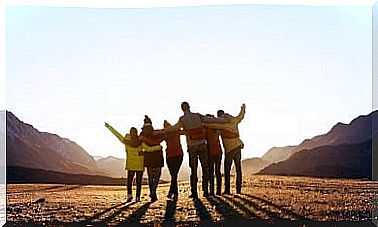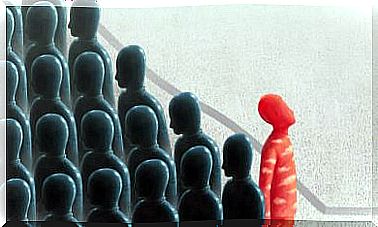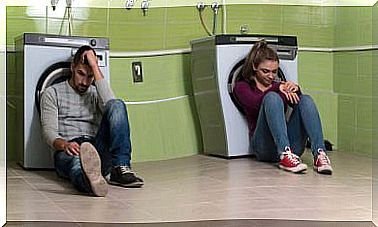4 Benefits Of Physical Activity In The Elderly

It is important to stay fit and healthy, especially as we all age. Therefore, in this article we tell you the benefits of physical activity in older people. An exercise that on the other hand is very easy to achieve, since it is not necessary to have a specific activity or for it to be intense.
Certainly, aging is associated with a reduction in the functionality of the cardiovascular and respiratory system, as well as a deterioration in the musculoskeletal and nervous systems. The practice of regular physical activity, even in old age, is essential to slow down the physiological aging process.
Health experts advise regular exercise for older people, as it offers myriad benefits, including prolonging lifespan. According to the National Institute on Aging, exercise is good for people of any age and can alleviate the symptoms of many chronic diseases. Contrary to popular belief, weakness and poor balance are more closely related to inactivity than age.
4 benefits of physical activity for older people
The benefits of physical activity for older people are numerous. For this reason and in order not to extend ourselves too much, we have selected the 4 most important ones. Discover them below!
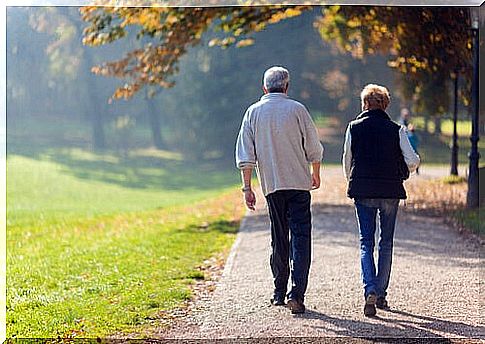
1.-Strengthens the heart
When older people are physically active, their muscles need more oxygen to function. To meet this demand, the heart has to do work that is more costly to it. The channels through which this blood travels are no longer as free or functional as they used to be, and its force to pump and distribute oxygen is no longer as great.
In this sense, physical activity allows adults to maintain the relaxation capacities of the heart, reduce the risk of hypertension and cardiovascular diseases, in addition to reducing difficulty in breathing.
Also, cardiovascular training for older people clears the airways and helps fight common illnesses, such as a simple cold or flu.
2.-Decreases body fat levels
Aging is accompanied by a gradual decrease in muscle mass, better known as sarcopenia. Physical activity is a great way to slow sarcopenia and improve muscle tone.
Also, having a high percentage of body fat is associated with a wide variety of diseases, including cardiovascular disease and diabetes. Regular exercise burns body fat, increases muscle mass and speeds up metabolism, which is very positive for older people (And for those not so old… too! ”).
3.-Reduces the risk of developing diseases
Physical activity reduces the risk of developing serious illnesses and, in fact, can minimize the negative impact of some symptoms after certain conditions have already developed.
For example, exercise helps people with conditions such as dementia and Parkinson’s disease by helping to maintain balance and coordination, as well as increasing functional independence. Finally, the exercise itself is a source of well-being for them.
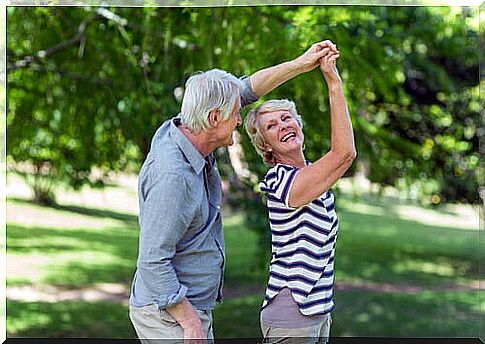
4.-Improves mental health
Among the benefits of physical activity in older people, the improvement of mental health is one of the most prominent. Keep in mind that exercise is a natural mood enhancer, as the body releases endorphins that make people feel good.
For this reason, exercise is recommended for older people who fight against the psychological effects of aging, as it can be the key to giving them momentum and energy. As you can imagine, physical activity not only brings physical benefits for older people, it also improves emotional well-being, self-esteem and quality of life. Certainly, sport creates social bonds and lowers the risk of depression.
What exercises can older people do?
After reviewing the benefits of physical activity in older people, it is a good time to briefly review the ideal exercises they can do:
1.-Aerobic and resistance exercises
Doctors recommend that older people get 30 minutes of cardio-respiratory resistance exercise each day, in order to raise the heart rate and speed up breathing. Walking, biking, or swimming are good examples of low-impact aerobics.
2.-Strength training
Strength training builds muscles through repetitive movements. Older people can do strength training with weights, resistance bands, or machines. Of course, adapting the weight to your conditions.
3.-Stretching exercises
Stretching is perhaps the best ending to a workout. These exercises stimulate muscle relaxation after a period of loading. Thus they constitute the first step to recovery after exercise, the basis of the next workout. We can say that, well done, they improve and maintain flexibility, prevent injuries and reduce muscle pain and stiffness in older people.
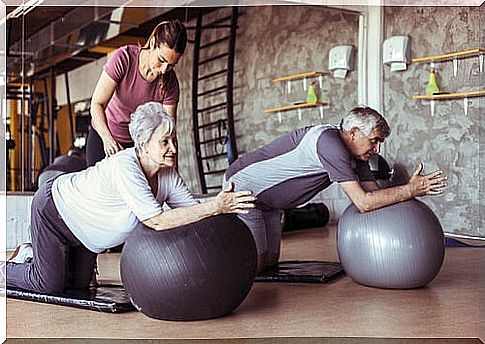
In short, regular physical activity helps reduce the effects of aging on muscles and cardiorespiratory function, improving quality of life and extending life expectancy in healthy and autonomous conditions. Finally, remember that it is much better if this exercise is done with control, under supervision, avoiding loads of intensity that can produce the opposite effect to the one intended.

